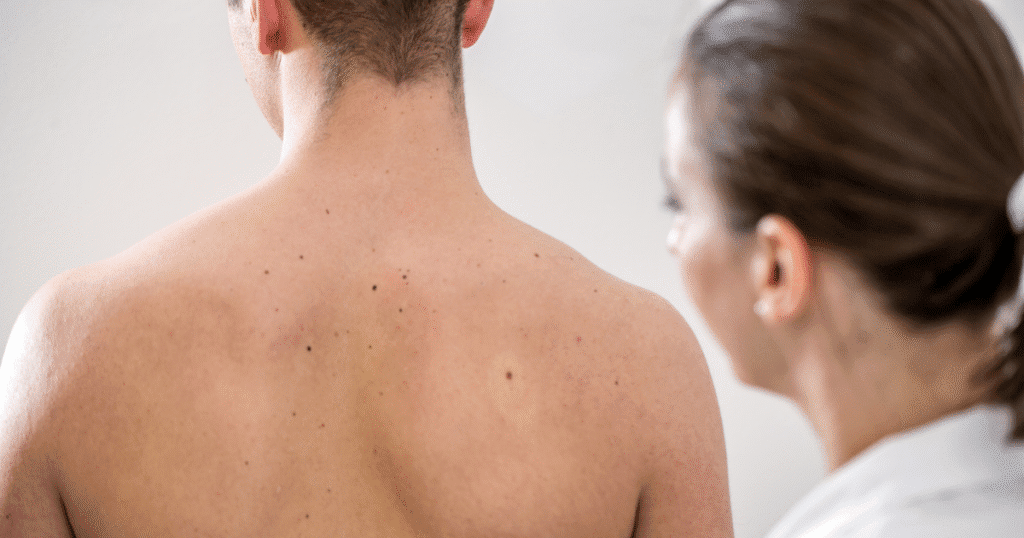Understanding Melanoma: Early Detection and Treatment Innovations
Melanoma is a prevalent and serious form of skin cancer that originates in melanocytes—the cells responsible for skin pigmentation. If not addressed swiftly, melanoma can spread to other parts of the body, making early detection crucial for effective treatment.
The Importance of Early Detection
"Melanoma is an extremely common cancer," explains Dr. Jesse Hirner, a dermatologist. "When detected early, it’s treated with a simple skin procedure, and we can cure it most of the time. However, late detection complicates treatment."
One critical aspect to keep in mind is that individuals who have had melanoma once are at a heightened risk of developing it again. According to Dr. Hirner, "Many patients are likely to have another melanoma at some point in their lives, emphasizing the importance of close monitoring."
Innovative Solutions at Nebraska Medicine
The Nebraska Medicine Dermatology team is leveraging new technologies to facilitate early detection of melanoma when treatment is most effective.
What is Total Body Photography?
Total body photography is an advanced method designed to monitor skin changes closely. This approach goes beyond simple photography; it is a comprehensive system aimed at tracking skin changes over time.
- Annual Checks: Total body photography is usually performed once a year and involves detailed images of the entire body, excluding undergarments.
- Advanced Imaging: The platform, FotoFinder, utilizes highly magnified imaging to provide deeper insights into the skin’s surface.
Dr. Hirner states, "Total body photography enables us to monitor skin changes meticulously, allowing for reliable detection of new spots and alterations in existing moles."
How Total Body Photography Works
This cutting-edge technology boasts several impressive features:
- 100x Magnification: Provides detailed views beneath the skin’s surface.
- Computerized Tracking: Methodically records all skin spots.
- AI Integration: Artificial intelligence aids in identifying suspicious spots.
- EHR Compatibility: Images can be accessed by all your healthcare providers through your electronic medical record.
Dr. Hirner emphasizes, "This technology allows for a more detailed understanding of skin changes compared to relying solely on memory—both the doctor’s and the patient’s."
Who Should Consider Total Body Photography?
It’s vital to recognize that total body photography is not suited for everyone. Nebraska Medicine primarily offers this service to high-risk individuals, which include those who:
- Have a history of melanoma.
- Possess a strong family history of melanoma.
- Suffer from genetic conditions elevating their melanoma risk.
- Have been classified as high-risk by a healthcare professional.
Dr. Hirner notes, "Screening individuals at low risk would incur unnecessary costs, so we concentrate on those at high risk for melanoma."
Insurance Coverage for Total Body Photography
Insurance coverage for total body photography has seen improvements, with Dr. Hirner stating, "In Nebraska, we expect about half of our patients will secure insurance coverage for this service." Just five years ago, it lacked coverage altogether but is becoming increasingly recognized as valuable.
The Nebraska Medicine team will liaise with your insurance provider prior to your appointment to clarify potential costs.
The Role of Artificial Intelligence in Skin Examination
The FotoFinder system employs AI to enhance the skin examination process, potentially surpassing human observation skills. Dr. Hirner remarks, "AI shows great potential in the early detection of melanoma. Certain AI models can even outperform a dermatologist."
However, it’s essential to remember that the decision to remove a suspicious spot ultimately involves both the patient and their doctor, with AI serving as an efficient tool in the process.
A Collaborative Approach at Nebraska Medicine
At Nebraska Medicine, the Multidisciplinary Melanoma Clinic assembles a team of specialists to devise the most effective treatment strategies for each patient. The team typically includes:
- Medical oncologists
- Dermatologists
- Surgical oncologists
- Mohs surgeons
Dr. Hirner states, "Having a collaborative team allows for real-time communication and valuable coordination."
For complex cases, the team engages in weekly discussions encompassing additional specialists, including radiation physicians and pathologists.
Next Steps for High-Risk Individuals
If you believe you might be at high risk for melanoma, it’s vital to consult your doctor about a potential referral to the Nebraska Medicine Multidisciplinary Melanoma Clinic. Regular skin checks, both at home and with a medical professional, continue to play an essential role in skin cancer detection, irrespective of your eligibility for total body photography.
Conclusion
Take proactive steps to monitor your skin health. Early detection through innovative methods, such as total body photography, can significantly impact melanoma treatment outcomes. Engage with your healthcare provider to explore the options available for effective skin cancer monitoring and prevention.
For more information about melanoma and skin cancer awareness, consider visiting Skin Cancer Foundation or American Academy of Dermatology.


